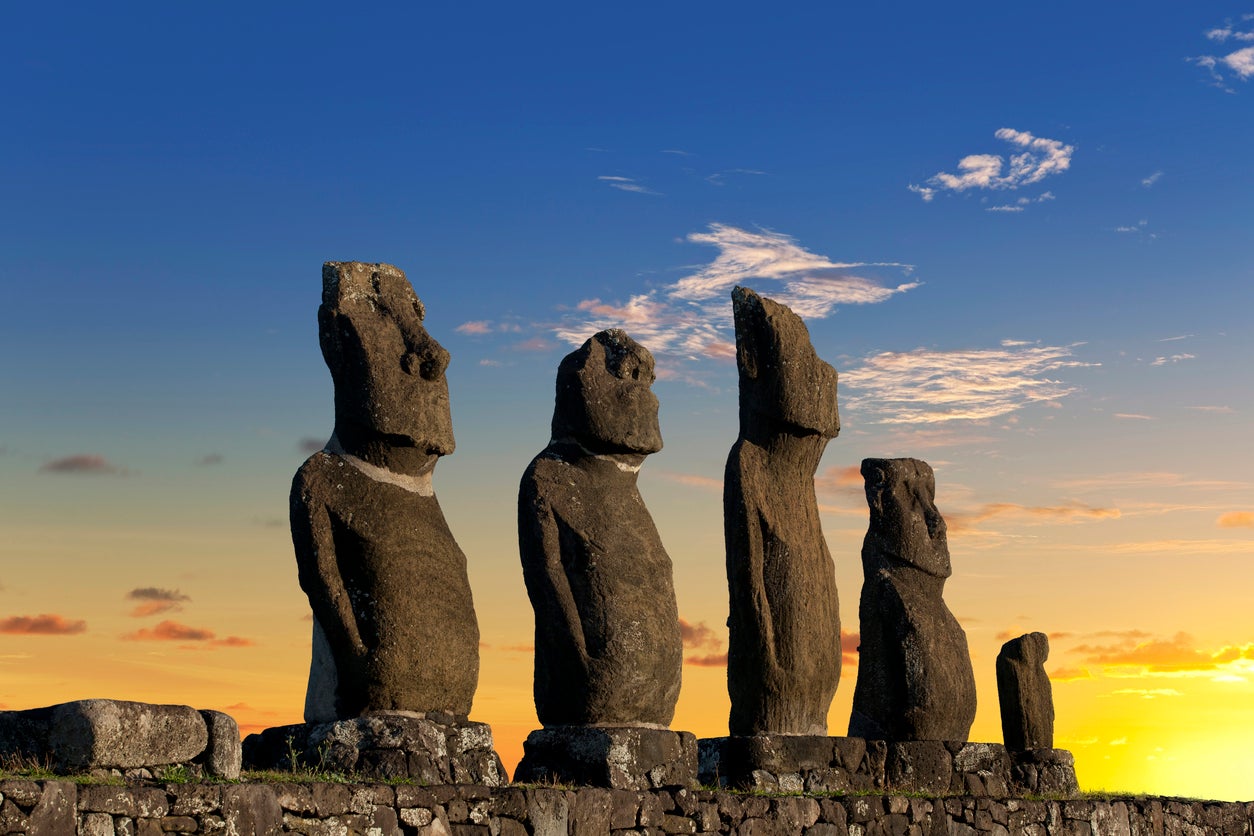Easter Island natives were sophisticated and peaceful, new study reveals
It was previously suggested that ecological collapse led to destruction of habitats on remote island, famous for its towering stone statues

Your support helps us to tell the story
From reproductive rights to climate change to Big Tech, The Independent is on the ground when the story is developing. Whether it's investigating the financials of Elon Musk's pro-Trump PAC or producing our latest documentary, 'The A Word', which shines a light on the American women fighting for reproductive rights, we know how important it is to parse out the facts from the messaging.
At such a critical moment in US history, we need reporters on the ground. Your donation allows us to keep sending journalists to speak to both sides of the story.
The Independent is trusted by Americans across the entire political spectrum. And unlike many other quality news outlets, we choose not to lock Americans out of our reporting and analysis with paywalls. We believe quality journalism should be available to everyone, paid for by those who can afford it.
Your support makes all the difference.A new study into the indigenous people of Easter Island has revealed that they were a sophisticated and peaceful society.
Located in the southeastern Pacific Ocean, the Chilean Island covers just 170 square kilometres and is one of the most remote places in the world. Its contentious history has long been a topic of fascination.
An international team of researchers studied the tools used by the Polynesian seafarers to carve their famous moai statues in a bid to unearth the truth behind the society’s mysterious collapse and discovered that the island’s inhabitants were not the destructive community history paints them to be.
Field Museum scientist Laure Dussubieux, who contributed to the study, published in Journal of Pacific Archaeology, said: “For a long time, people wondered about the culture behind these very important statues. This study shows how people were interacting, it’s helping to revise the theory.”
According to perpetuated collapse narrative, the population of Easter Island, also known as Rapa Nui, was wiped out after the 17th century when a shortage of natural resources led to infighting.
Lead author Dale Simpson,Jr., an archaeologist from the University of Queensland, said there was evidence to support the new theory that there was a high level of collaboration.
“The idea of competition and collapse on Easter Island might be overstated,” he said. “To me, the stone carving industry is solid evidence that there was cooperation among families and craft groups.”
The first inhabitant of Easter Island arrived around 900 years ago and the population increased to thousands. Mr Simpson said that the size and number of the moai hint at a complex society.
“Ancient Rapa Nui had chiefs, priests, and guilds of workers who fished, farmed, and made the moai. There was a certain level of sociopolitical organisation that was needed to carve almost a thousand statues.”
And while it was thought that the arrival of colonists contributed to the annihilation of the Easter Island population, experts say it did not collapse in the way that has been previously suggested.
"There's so much mystery around Easter Island, because it's so isolated, but on the island, people were, and still are, interacting in huge amounts," Mr Simpson said. "There are thousands of Rapa Nui people alive today -- the society isn't gone."
Looking forward, experts believe that the new findings will help paint a more accurate view of how societies work.
“What happens in this world is a cycle, what happened in the past will happen again,” Ms Dussubieux said. “Most people don’t live on a small island, but what we learn about people’s interactions in the past is very important for us now because what shapes our world is how we interact.”
Join our commenting forum
Join thought-provoking conversations, follow other Independent readers and see their replies
Comments